Elane
-
Official Full Name
elastase, neutrophil expressed -
Overview
Elastases form a subfamily of serine proteases that hydrolyze many proteins in addition to elastin. Humans have six elastase genes which encode the structurally similar proteins. The product of this gene hydrolyzes proteins within specialized neutrophil lysosomes, called azurophil granules, as well as proteins of the extracellular matrix following the proteins release from activated neutrophils. The enzyme may play a role in degenerative and inflammatory diseases by its proteolysis of collagen-IV and elastin of the extracellular matrix. This protein degrades the outer membrane protein A (OmpA) of E. coli as well as the virulence factors of such bacteria as Shigella, Salmonella and Yersinia. Mutations in this gene are associated with cyclic neutropenia and severe congenital neutropenia (SCN). This gene is clustered with other serine protease gene family members, azurocidin 1 and proteinase 3 genes, at chromosome 19pter. All 3 genes are expressed coordinately and their protein products are packaged together into azurophil granules during neutrophil differentiation. [provided by RefSeq, May 2009] -
Synonyms
ELANE;elastase, neutrophil expressed;GE;NE;HLE;HNE;ELA2;SCN1;PMN-E;neutrophil elastase;elastase-2;medullasin;PMN elastase;leukocyte elastase;elastase 2, neutrophil;human leukocyte elastase;polymorphonuclear elastase;bone marrow serine protease;granulocyte-derived elastase
Recombinant Proteins
- Human
- Mouse
- Dog
- Human Neutrophils
- Mammalian Cells
- E.coli
- Human Blood
- Wheat Germ
- Human Cells
- HEK293
- Yeast
- Human Neutrophil
- Non
- His
- GST
- Avi
- Fc
- SUMO
- MBP
Background
What is ELANE Protein?
Think of the ELANE protein, or neutrophil elastase, as your body's infection-fighting superhero. It's mostly hanging out in neutrophils, which are vital white blood cells that step up when bacteria invade. Beyond just tackling germs, ELANE helps with fixing tissues and managing inflammation, key roles in things like helping wounds heal. But if ELANE gets too active, it can actually cause harm, leading to problems like COPD and cystic fibrosis. That's why striking the right balance with ELANE is important for crafting treatments for these conditions. Researchers are diving into this area because it's crucial for developing innovative ways to manage and treat inflammatory and respiratory diseases.What is the Function of ELANE Protein?
The ELANE protein, or neutrophil elastase, is like the body's cleanup crew and guardian, packed into white blood cells called neutrophils. When your body needs to fight off infections, ELANE jumps in to dismantle the bacteria, keeping you safe from harmful invaders. Besides being a defender against microbes, ELANE plays a hand in remodeling tissues and managing inflammation, both crucial for healing and recovery. However, if it goes overboard, ELANE can end up damaging tissues, which is something seen in diseases like COPD and cystic fibrosis. Finding the right balance in its activity is key, which is why there's a lot of interest in understanding ELANE for treating these health issues. Researchers are constantly exploring ways to harness ELANE’s functions to create new therapies, making it a significant topic in medical research and immune health discussions.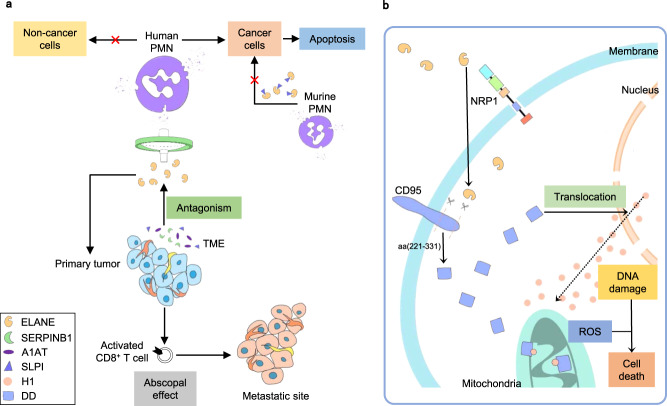
Fig1. ELANE kills cancer cells without toxicity to non-cancer cells and induces cell apoptosis in primary tumors and at metastatic sites. (Boqiang Peng, 2021)
ELANE Related Signaling Pathway
The ELANE-related signaling pathway is like a secret communication line in your body. Think of ELANE as the boss protein that sends out orders when there’s trouble, like an infection. It tells the immune system’s first responders—those are the neutrophils—to gear up and get ready to fight. This pathway is really important because it helps the body react fast and keep us healthy. Scientists are always trying to understand it better, hoping to find new ways to tackle diseases. It’s like a hidden hero that keeps everything running smoothly.ELANE Related Diseases
The ELANE protein, often called neutrophil elastase, is closely tied to several diseases because of its dual role in fighting infections and influencing inflammation. When everything’s working well, ELANE helps protect us from harmful bacteria. But things can go awry if there's a mutation in the ELANE gene, leading to severe congenital neutropenia—a challenging condition where the body can't produce enough neutrophils, increasing the risk of infections. On the flip side, too much ELANE activity can create problems in conditions like chronic obstructive pulmonary disease (COPD) and cystic fibrosis. In such cases, the protein’s overactivity breaks down tissues and ramps up inflammation, worsening these diseases. Researchers are really keen to figure out how ELANE is involved in these processes because this knowledge could lead to targeted therapies, giving hope for better managing these inflammatory and immune-related health issues.Bioapplications of ELANE
ELANE, or neutrophil elastase, is a protein that’s got a lot of potential for different uses in biology and medicine. It’s like a versatile tool that can be harnessed in various ways. For instance, researchers are looking at how ELANE can be used to develop new treatments for infections. Since it’s so good at breaking down proteins, it could help in designing therapies that target harmful bacteria more effectively. On the flip side, understanding how ELANE works can also help in managing diseases where it goes haywire, like in certain immune disorders. Scientists are also exploring its role in inflammation, which is a big deal because inflammation is linked to so many health issues. By studying ELANE, they hope to find ways to control it better, which could lead to new drugs or therapies.Case Study
Case Study 1: Kummarapurugu AB. et al. Am J Respir Cell Mol Biol. 2022
Researchers found that when macrophages come into contact with neutrophil elastase, they release something called macrophage extracellular traps, or METs. This could make airway inflammation in cystic fibrosis worse. They tested this idea using cells from people with and without CF, and saw the same thing happen in mice. Turns out, this process involves some changes to the way DNA is packaged in the cells.-
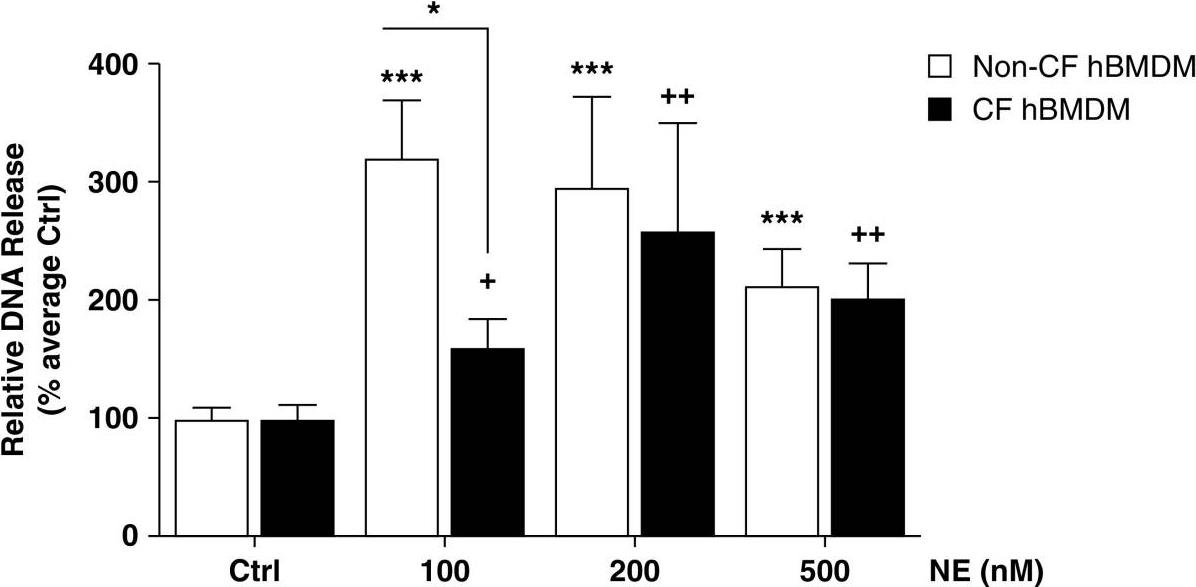 Fig1. NE-induced extracellular DNA release from non-CF and CF hBMDM.
Fig1. NE-induced extracellular DNA release from non-CF and CF hBMDM. -
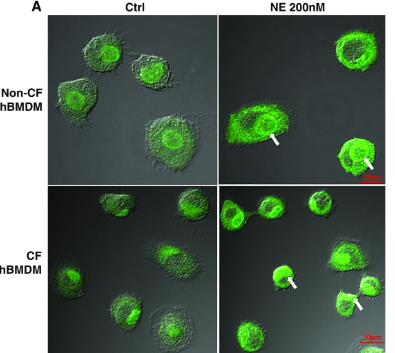 Fig2. NE increased H3 citrulline (citH3) in both non-CF and CF hBMDM.
Fig2. NE increased H3 citrulline (citH3) in both non-CF and CF hBMDM.
Case Study 2: Zheng S. et al. Int J Mol Sci. 2024
Researchers figured that neutrophil elastase (NE) gets inside macrophages, stays active, and makes them more inflamed, but how it does this isn't totally clear. They thought NE might mess with proteins called HDACs and Sirtuins, throwing off the balance of certain chemical reactions and causing a protein called HMGB1 to move around in the cell, leading to inflammation. They tested this using macrophages from healthy people and those with CF or COPD. Turns out, NE breaks down HDACs and Sirtuins, changes where HMGB1 hangs out in the cell, and pushes macrophages toward an inflamed state.-
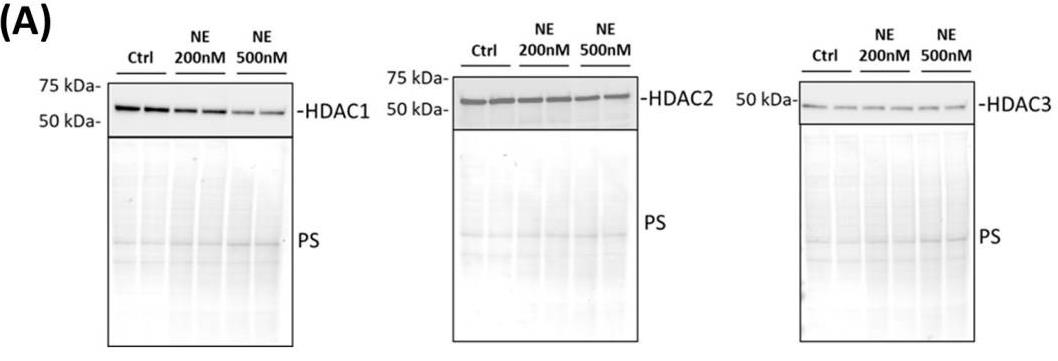 Fig3. Nuclear extracts were separated using SDS-PAGE.
Fig3. Nuclear extracts were separated using SDS-PAGE. -
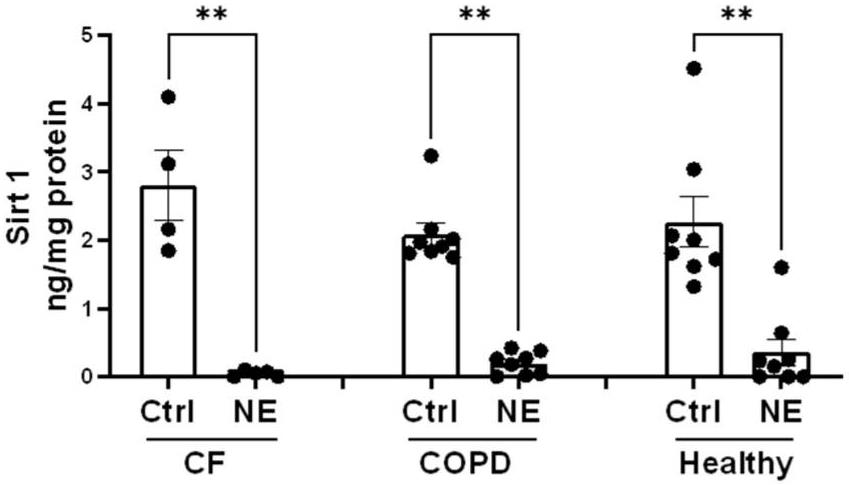 Fig4. Neutrophil elastase decreased Sirt 1 in total cell lysates from patients with CF and COPD and healthy controls.
Fig4. Neutrophil elastase decreased Sirt 1 in total cell lysates from patients with CF and COPD and healthy controls.
Quality Guarantee
High Purity
-
.jpg) Fig1. SDS-PAGE (ELANE-2171H)
Fig1. SDS-PAGE (ELANE-2171H) -
.jpg) Fig2. SDS-PAGE (ELANE-3221H)
Fig2. SDS-PAGE (ELANE-3221H)
Involved Pathway
Elane involved in several pathways and played different roles in them. We selected most pathways Elane participated on our site, such as Activation of Matrix Metalloproteinases,C-MYB transcription factor network,Collagen degradation, which may be useful for your reference. Also, other proteins which involved in the same pathway with Elane were listed below. Creative BioMart supplied nearly all the proteins listed, you can search them on our site.
| Pathway Name | Pathway Related Protein |
|---|---|
| Systemic lupus erythematosus | HIST2H2BB,GM14483,ACTN3,C1RA,HIST3H2BB-PS,HIST1H2BC,HIST1H2AP,H2BFWT,HIST1H2AG,HIST2H4A |
| Degradation of the extracellular matrix | TPSAB1,MMP11,LOC100686744,MMP19,CTSL1,NID1,ADAM9,ACAN,ADAM15,FURINB |
| Collagen degradation | LOC100686744,COL17A1,TLDC2,MMP10,MMP12,MGC174857,MMP8,CTSL1,MMP15,COL9A1 |
| Extracellular matrix organization | ADAM9,DDR2,CTSG,ITGB3A,FAM49BA,COL2A1,ICAM4,LOC100686744,LTBP2,COL5A2 |
| Activation of Matrix Metalloproteinases | MMP10,CMA1,LOC100686744,MMP13,CTSK,TPSAB1,MMP15,MGC174152,CTRB1,CTSL2 |
| C-MYB transcription factor network | COL1A2,PPID,LECT2,PIAS3,CEBPB,SMARCA2,MYOD1,CEBPA,GATA1,SLC25A3 |
| amb2 Integrin signaling | CYR61,NIPAL1,HP,MST1R,MST1,LPA |
| Transcriptional misregulation in cancer | PLAT,TSPAN7,GOLPH3L,H3F3C,TAF15,MAF,TLX3,PAX8,FUS,ARNT2 |
-
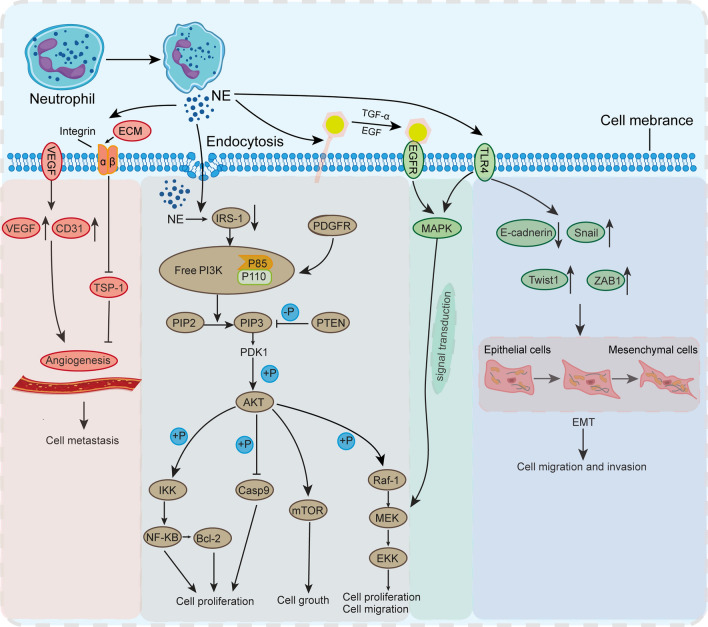 Fig1. NE promotes the proliferation, migration, and invasion of tumor cells. (Wangqiang Jia, 2024)
Fig1. NE promotes the proliferation, migration, and invasion of tumor cells. (Wangqiang Jia, 2024) -
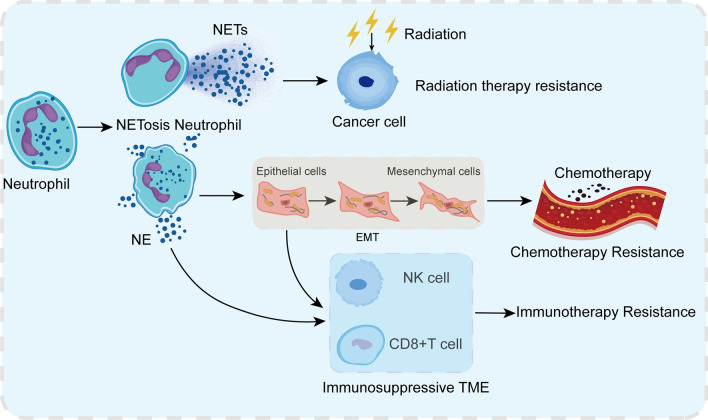 Fig2. Mechanisms of NE involvement in resistance to systemic and local cancer treatment. (Wangqiang Jia, 2024)
Fig2. Mechanisms of NE involvement in resistance to systemic and local cancer treatment. (Wangqiang Jia, 2024)
Protein Function
Elane has several biochemical functions, for example, RNA polymerase II transcription corepressor activity,cytokine binding,endopeptidase activity. Some of the functions are cooperated with other proteins, some of the functions could acted by Elane itself. We selected most functions Elane had, and list some proteins which have the same functions with Elane. You can find most of the proteins on our site.
| Function | Related Protein |
|---|---|
| heparin binding | TGFBR3,Itgam&Itgb2,PTN,SMOC2,PGF,CCL5,FGF14,THBS1,SERPINC1,COL25A1 |
| peptidase activity | PRSS41,ADAM1B,TMPRSS11G,PM20D1,Ren1,CAPN3,PSD,SPG7,CASPB,ELA3L |
| protease binding | TNF,A2M,FLOT1,INS2,IL1R1,F3,SERPINB6,TNFAIP3,RNF139,HSPD1 |
| RNA polymerase II transcription corepressor activity | TXLNB,RBBP8,TBX18,BEND6,UXT,HDGF,SIN3A,URI1,OLIG3,N4BP2L2 |
| serine-type endopeptidase activity | MBTPS1,KLK12,PRSS45,GM5077,RHBDL3,CELA2B,PIK3IP1,CELA3A,PRSS50,CFI |
| cytokine binding | CD74,CSF1RA,IL17F,CRLF1,CXCR4,IFNGR1,NOG,IL31RA,KIT,CSF1R |
| protein binding | YWHAQ,SRI,NACA,DNAJC15,C1orf50,SYT16,C2orf50,S1PR2,SLC3A1,PLN |
| endopeptidase activity | ACE,ACE2,KLK1B5,KLK1B1,SENP3B,KLK1B26,ADAM10,CPS1,MMP9,PSMA5 |
Interacting Protein
Elane has direct interactions with proteins and molecules. Those interactions were detected by several methods such as yeast two hybrid, co-IP, pull-down and so on. We selected proteins and molecules interacted with Elane here. Most of them are supplied by our site. Hope this information will be useful for your research of Elane.
SERPINA1;SLPI;iovo_melga;Col17a1;GZMB;P/V/C
Resources
Research Area
Serine Proteases and RegulatorsInflammatory Mediators
Neutrophils
Asthma Therapeutic Targets
Related Services
Related Products
References


